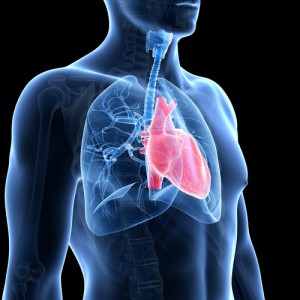
The Ohio State University Wexner Medical Center
According to a recent study published yesterday in The Annals of Thoracic Surgery, non-traditional donor lungs can save more lives. For patients with end-stage lung disease, lung transplantation can improve their quality of life and even save or extend their lives. However, only 17 percent of donor lungs are currently successfully transplanted, therefore, there is a critical lack of suitable organs for lung disease patients.
Dr. Bryan Whitson , a cardiothoracic surgeon at The Ohio State University Wexner Medical Center, and head lung transplant surgeon at the Comprehensive Transplant Center led the research, entitled, “Use of the Donor Lung After Asphyxiation or Drowning: Effect on Lung Transplant Recipients.” Along with Dr. Whitson, two other Ohio State researchers, Dr. Robert Higgins and Dr. Ahmet Kilic, participated in the study, as well as three researchers from The University of Minnesota (Dr. Marshall Hertz, Dr. Rosemary Kelly and Dr. Sara Shumway) and Dr. Jonathan D’Cunha from The University of Pittsburg Medical Center. What Dr. Whitson and his team demonstrated in their study is that lungs from donors who died from asphyxiation or drowning can actually be safely transplanted into patients suffering from end-stage lung disease. “Increasing the potential donor pool would help reduce the number of patients who die waiting for a lung transplant and help expand this life-saving treatment to those who need it,” explained Dr. Whitson.
[adrotate group=”3″]
 All adult lung transplant recipient data from 1987 to 2010 were analyzed through the United Network for Organ Sharing Standard Transplant Analysis and Research Database registry. Researchers were focused on asphyxiation and drowning while perusing donors’ cause of death and associating it with recipient survival outcomes in order to evaluate incidence of treatment rejection within the first year post-transplant. They discovered that 18,250 adult primary lung transplantations were performed during that period of time; 309 cases were cases of donor cause of death by asphyxiation or drowning. Hereupon, these causes of death weren’t associated with increased incidence of treatment rejection or poor long-term survival within the first year post-transplant. On the contrary, survival rates were exactly the same in recipients of lungs from asphyxiation or drowning deaths when comparing them to survival rates of patients that received lungs from donors who died from other causes; there were no differences between the two situations.
All adult lung transplant recipient data from 1987 to 2010 were analyzed through the United Network for Organ Sharing Standard Transplant Analysis and Research Database registry. Researchers were focused on asphyxiation and drowning while perusing donors’ cause of death and associating it with recipient survival outcomes in order to evaluate incidence of treatment rejection within the first year post-transplant. They discovered that 18,250 adult primary lung transplantations were performed during that period of time; 309 cases were cases of donor cause of death by asphyxiation or drowning. Hereupon, these causes of death weren’t associated with increased incidence of treatment rejection or poor long-term survival within the first year post-transplant. On the contrary, survival rates were exactly the same in recipients of lungs from asphyxiation or drowning deaths when comparing them to survival rates of patients that received lungs from donors who died from other causes; there were no differences between the two situations.
Based on this study, Whitson suggests that, “asphyxiation or drowning as a donor cause of death should not automatically exclude the organ from transplant consideration.” He goes on to explain that, “while lung donor cause of death from asphyxiation or drowning only contributed to a modest proportion of the donor pool for this study, our results support the use of non-traditional donor lungs to potentially expand the donor pool,” hoping that individual transplant centers that evaluate and assess donors on a case-by-case can expand their criteria for donation.
“Any increase in donor availability, while maintaining excellent outcomes, should be explored. It’s a matter of life or death for patients on the waiting list with end-stage lung disease,” Dr. Whitson concluded.

